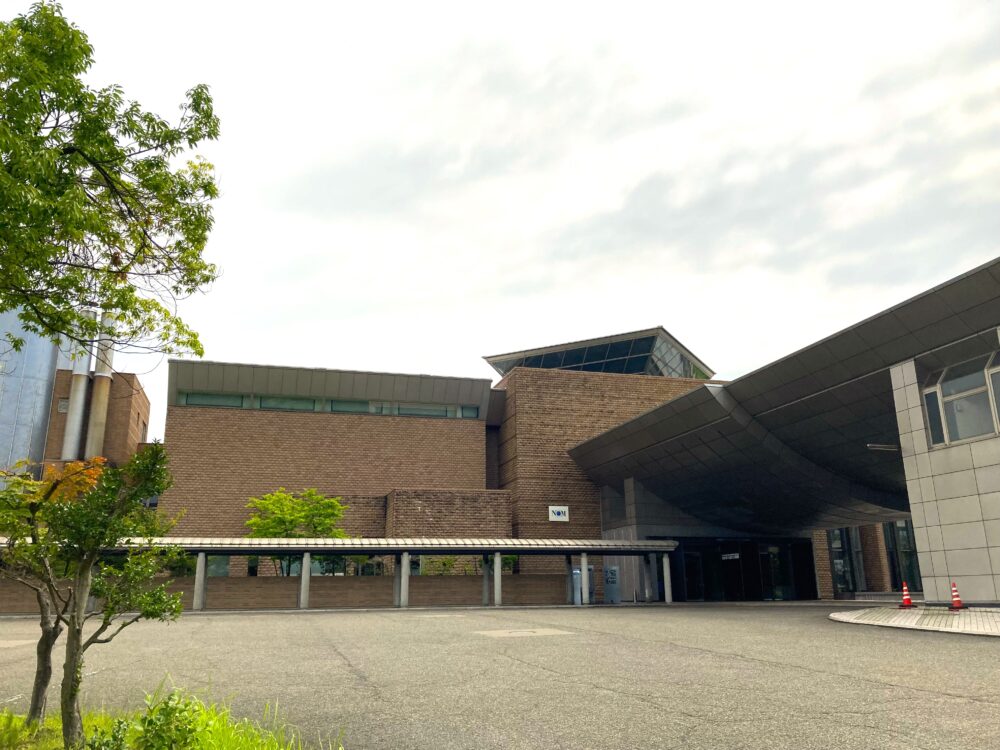
A Museum Showcasing the “Nabis,” Artists Deeply Connected to Japan
Located in Nagaoka City, the Niigata Prefectural Museum of Modern Art features an impressive collection of modern paintings and sculptures from Japan and abroad — from the Japanese modern art movement to the French Barbizon school.
The museum houses about 6,000 works, making it one of the most extensive regional collections in Japan.
Among them, the highlight is the French art group known as the Nabis, who were deeply influenced by Japanese art.
Here in Niigata, you can admire major works by Maurice Denis, as well as hidden gems by Paul-Élie Ranson, often called “the most Japanophile of all the Japanophile Nabis.”
It’s quite surprising to find such a rich collection of Nabi art right here in Japan!
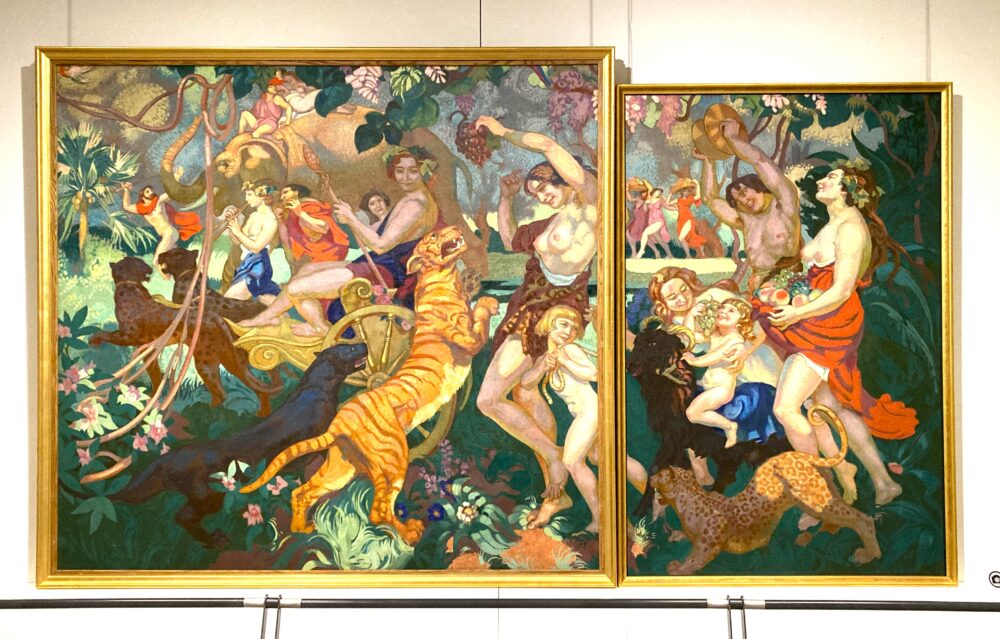
Rare Early Works by Rodin
Greeting visitors at the entrance is “Caryatid and Atlantes” by Auguste Rodin.
This sculpture is one of Rodin’s early works, created before he became widely known.
Its powerful anatomy and dynamic composition already show the beginnings of his later style, along with a clear influence from the Italian Renaissance.
What makes this piece even more remarkable is its rarity.
Since it was made during Rodin’s little-known period, very few casts were ever produced — and only a handful still exist worldwide.
It’s truly a Rodin you can only encounter here.
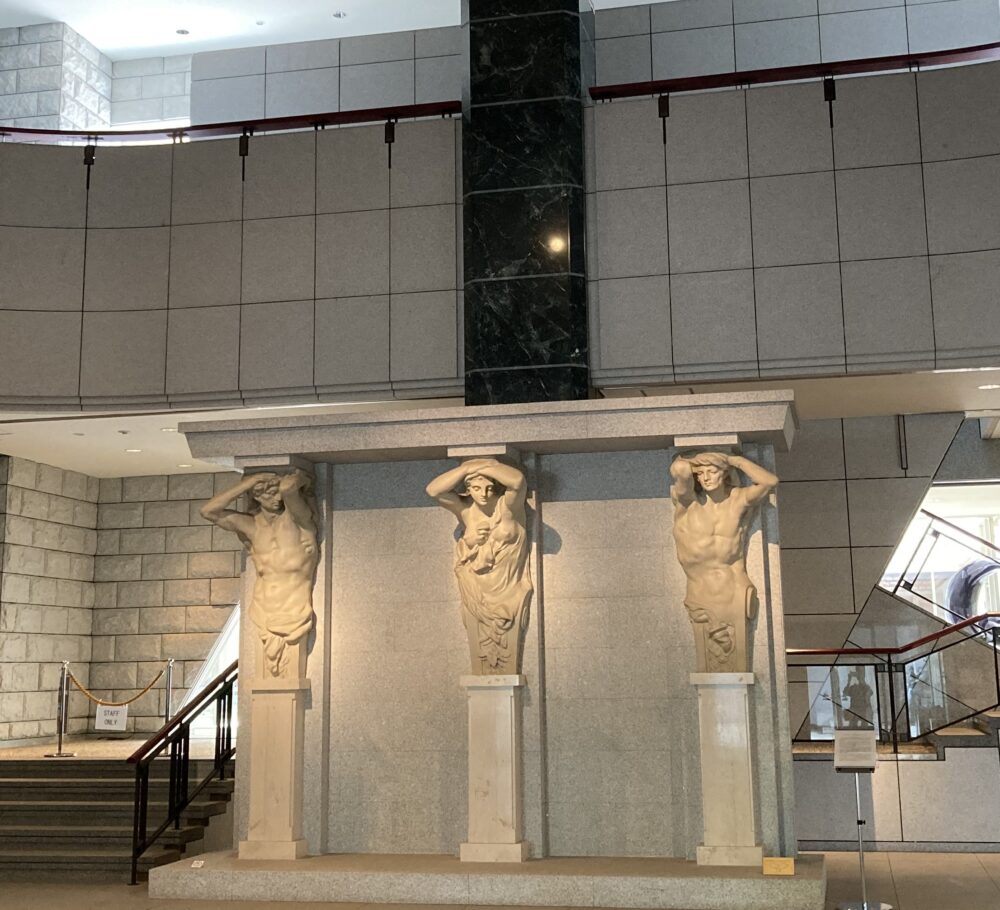
Collection Highlights
In this section, we’ll take a closer look at some of the museum’s most remarkable works, focusing on Western art, including the Nabis and Rodin.
Each piece reflects the artist’s unique vision and the spirit of its time.
If a particular work catches your eye, be sure to see it in person — the real-life experience is truly special.
Note: The museum’s collection exhibitions change regularly. Before your visit, check the official website (Exhibit list available in Japanese only) for the latest information on current displays.
Maurice Denis
“Bacchanal of the Bengal Tiger” (1920)
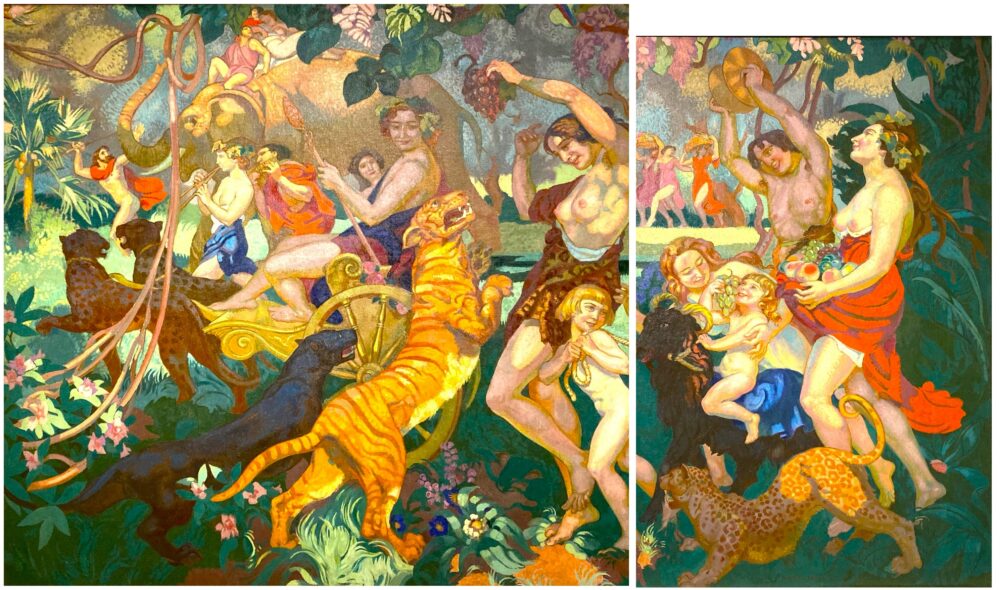
About This Work (Tap or Click to View)
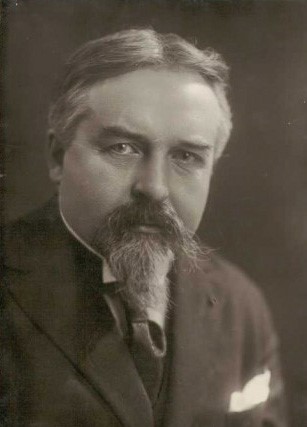
Maurice Denis (1870–1943) was one of the central figures of the French art group known as the Nabis.
The word “Nabi” comes from the Hebrew word for “prophet,” and these artists sought to move beyond Impressionism’s realism by bringing emotion, spirituality, and symbolism back into painting.
A wall painting for a fur shop?
This large-scale work, Bacchanal of the Bengal Tiger, was originally commissioned for the interior of a fur shop in Geneva called Le Tigre Royal (“The Royal Tiger”).
Denis chose the theme of the Bacchanal, an ancient Roman festival celebrating Bacchus, the god of wine. Traditionally, these ceremonies were attended only by women, which explains why Denis filled the canvas with dancing female figures.
Among them, you can spot several wild animals — including a Bengal tiger — symbolizing passion and vitality.
These creatures were likely included to match the client’s request, and together they create a dreamlike world where humans and beasts join in a dance of freedom and ecstasy. Denis’s elegant lines and harmonious colors perfectly capture this mystical energy.

A divided masterpiece
Unfortunately, after the shop closed, the painting was sold to an American collector and later cut into two separate panels for sale.
Even though the upper part was also trimmed, both sections still retain the strength and beauty of Denis’s original vision.
The vivid colors and balanced composition make Bacchanal of the Bengal Tiger one of the true highlights of the Niigata Prefectural Museum of Modern Art’s collection.
Whether you’re a fan of Maurice Denis or simply curious about the world of the Nabi painters, this work is a must-see when visiting Niigata.
Maurice Denis
“Marthe in the Evening (Marthe Symbolist)” (1892)
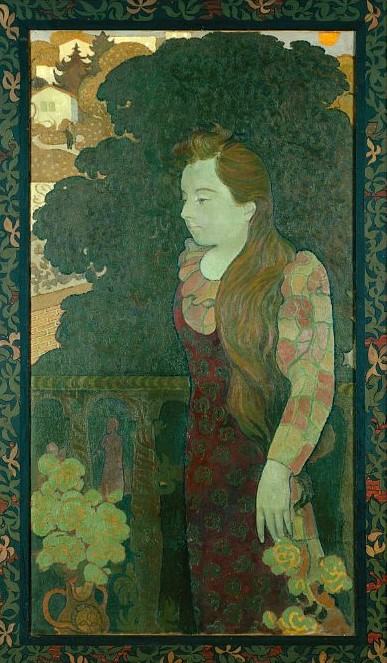
About This Work (Tap or Click to View)
This early painting by Maurice Denis was exhibited at the 8th Salon des Indépendants in Paris.
Compared with his later masterpiece Bacchanal of the Bengal Tiger (1920), this work features a calmer, more muted palette that reveals a softer side of the artist.
The woman depicted here, Marthe Meurier, would later become Denis’s wife.
It is said that she even designed the decorative frame herself.
Marthe often appeared in Denis’s paintings as his muse — a figure of serenity and inspiration.
One striking feature of Marthe in the Evening is the pale, almost luminous tone of her face.
The green background doesn’t contrast sharply with her complexion; instead, it seems to absorb and merge with it, creating a quiet, dreamlike harmony.
Denis once wrote:
“A painting is essentially a flat surface covered with colors arranged in a certain order.”
Although he is well known for his colorful decorative works, Denis’s true focus was on order and symbolism.
He believed painting should express the spiritual essence of a subject, not just reproduce its appearance.
In this piece, that philosophy shines through.
Bathed in the fading light of sunset, Marthe stands on a balcony surrounded by fresh greenery — calm, mysterious, and timeless.
What kind of spirituality do you feel in this painting?
When you visit the Niigata Prefectural Museum of Modern Art, take a moment to immerse yourself in the peaceful world of Maurice Denis.
Paul-Elie Ranson
“Seven Women Harvesting” (1895)
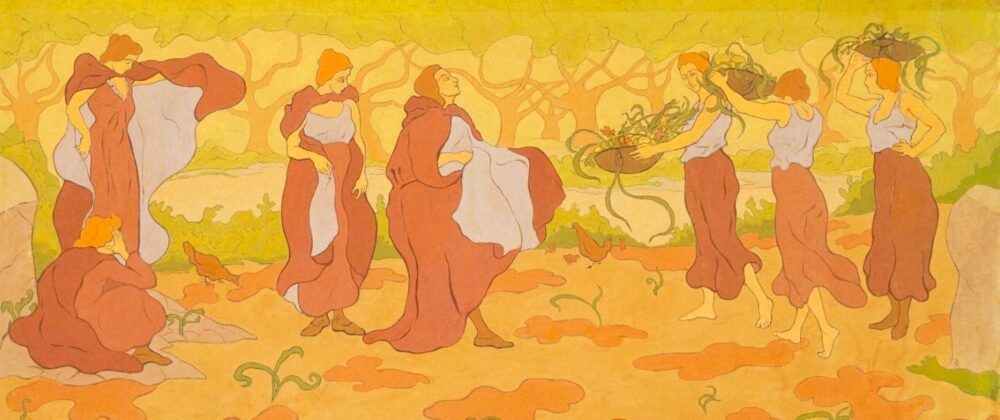
About This Work (Tap or Click to View)
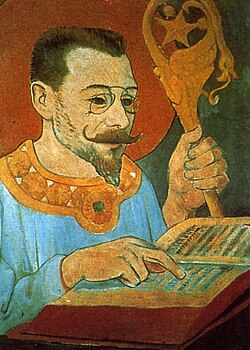
The “Japanophile Nabi” Captivated by Japanese Art
Like many members of the Nabi group, Paul-Elie Ranson was deeply inspired by Japanese art.
He was even called “the most Japanophile of all the Japanophile Nabis.”
For reference, Pierre Bonnard was known as “the Japanophile Nabi,” so Ranson was seen as being even more influenced by Japanese woodblock prints and traditional paintings.
Ranson’s style stands out within the Nabis for its clear contour lines.
While many Nabis retained some Impressionist brushwork, Ranson preferred carefully drawn outlines and bold areas of color.
This approach created works that were both decorative and simple, yet rich in color and feeling.
“Seven Women Harvesting” is painted using glue tempera, a technique similar to that used in Japanese paintings.
This method gives the surface a matte, soft texture that adds warmth to the scene.
A Mural for an Art Nouveau Interior
This painting was originally created for the dining room of a new Paris store owned by art dealer Siegfried Bing — the same dealer famous for selling Japanese prints to Vincent van Gogh.
Ranson worked on this project alongside other Nabi artists such as Maurice Denis and Édouard Vuillard, who each designed murals for different rooms.
In “Seven Women Harvesting,” Ranson used warm tones and the clear colors typical of glue tempera to brighten the dining space.
The peaceful figures of women at harvest evoke a feeling of happiness — a perfect theme for a room meant to bring people together over food.
After the store’s renovation, the mural was removed and remained rolled up for nearly 90 years.
Now rediscovered and displayed in Japan, it almost feels like fate — a fitting destiny for the “Japanophile Nabi.”
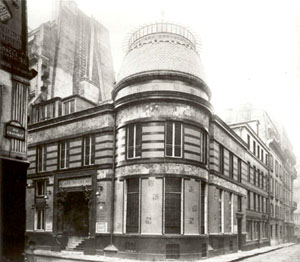
The Nabi Ideal of Decorative Art
Unlike paintings meant for exhibition, this work was designed specifically for an interior space.
For Ranson, creating a mural that harmonized with its surroundings was true art — a joyful pursuit of beauty and order.
“Seven Women Harvesting” perfectly embodies the Nabis’ ideal of decorative art.
Take your time to enjoy this serene and harmonious masterpiece at the Niigata Prefectural Museum of Modern Art.
Claude Monet
“Frost on the Plains of Colombes” (1873)
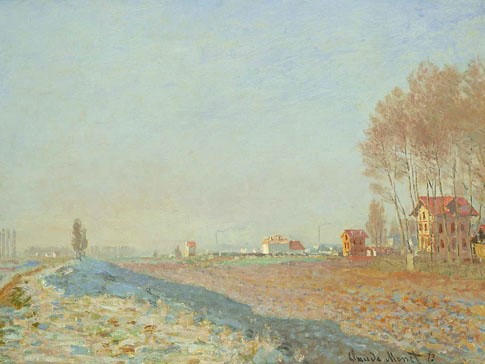
About This Work (Tap or Click to View)
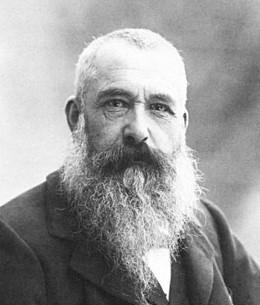
When we talk about the master of Impressionism, Claude Monet always comes to mind.
His famous painting Impression, Sunrise (1874) gave the Impressionist movement its name.
This piece, Frost on the Plains of Colombes, was painted just a year before that historic first Impressionist Exhibition.
The scene shows the plains of Colombes, located southwest of Argenteuil, the town near Paris where Monet was living at the time.
The painting captures the cool morning air after a frost.
Soft brushstrokes and delicate color gradations create a calm and refreshing atmosphere, full of gentle winter light.
Monet was known as “the painter of light,” and this work beautifully shows why.
He was fascinated by the subtle changes of light at dawn—moments that reveal nature’s quiet beauty.
Standing before this painting, you can almost feel the crisp air and the first rays of sunlight touching the frozen ground.
John Everett Millais
“Portrait of Alice Gray” (1859)
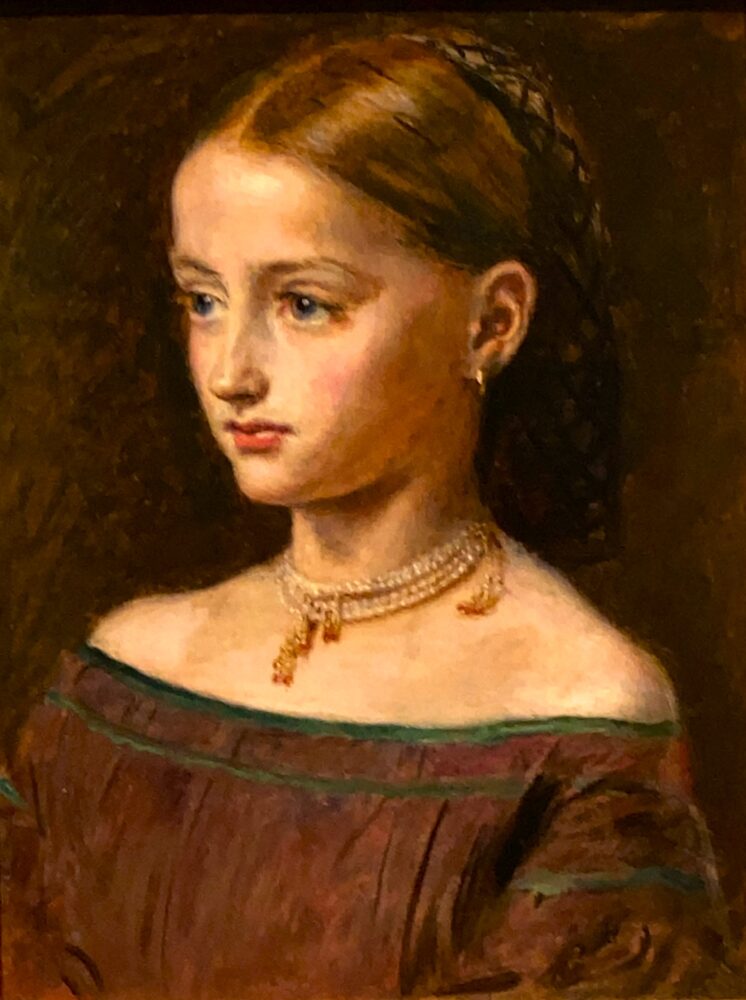
About This Work (Tap or Click to View)
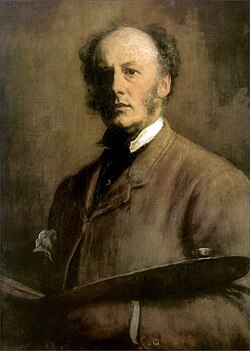
A Leading Figure of the Pre-Raphaelite Brotherhood
John Everett Millais was one of the founders of the Pre-Raphaelite Brotherhood (P.R.B.), a group of British artists who sought to revive the sincerity and purity of medieval and early Renaissance art.
They valued careful observation of nature and rejected the rigid academic style that dominated 19th-century England.
Millais is best known for his masterpiece Ophelia (1851–1852), housed at Tate Britain in London.
Its detailed depiction of flowers and the delicate expression of the drowning Ophelia make it one of the most moving works in British art.
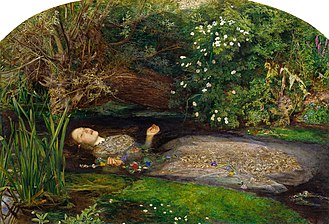
A Change in Style After Marriage
After marrying, Millais became the father of eight children.
Supporting a large family meant he could no longer spend long hours perfecting tiny details as he had done in his early career.
He once said:
“I can no longer afford to spend a whole day painting an area the size of a five-shilling piece.”
Gradually, his style softened—becoming more accessible to the general public while retaining his deep sense of humanity.
Portrait of Alice Gray — A Work from a Turning Point
Painted in 1859, Portrait of Alice Gray belongs to this transitional period in Millais’s career.
The model was Alice Gray, his 14-year-old sister-in-law.
Although small in size, the painting reveals both innocence and emotional depth.
The background is simpler than in his early Pre-Raphaelite works, but the warm and gentle gaze shows Millais’s continued dedication to capturing the truth of his subjects.
Soon after this, Millais became a full member of the Royal Academy and one of the most popular painters in Victorian England—his works even appeared in advertisements.
This intimate portrait marks a moment of change in Millais’s artistic journey—from his meticulous early style to the expressive realism of his later years.
When you visit the Niigata Prefectural Museum of Modern Art, take a moment to admire this quiet yet powerful work that reflects both artistic evolution and human warmth.
Auguste Rodin
“Cariatide and Atlantes” (ca.1876)
About This Work (Tap or Click to View)
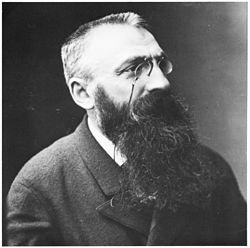
When people think of Auguste Rodin, many recall The Gates of Hell or The Burghers of Calais at the National Museum of Western Art in Tokyo.
Known as “the father of modern sculpture,” Rodin transformed the world of sculpture—but his early years were far from easy.
Struggles in His Youth
As a young man, Rodin failed the entrance exam for the prestigious École des Beaux-Arts three times.
At the time, the art world favored idealized beauty in the Neoclassical style, while Rodin pursued emotional realism and expressive movement. His unconventional approach was misunderstood, and recognition came slowly.
After the death of his sister, he briefly entered a monastery, but with the encouragement of the abbot, he returned to art. He supported himself as a decorative craftsman, mastering his technical skills along the way.
Inspired by Michelangelo
Rodin’s life changed dramatically after a trip to Italy in 1875.
There, he encountered the powerful sculptures of Michelangelo, whose dynamic forms deeply influenced him.
Rodin later said:
“It was Michelangelo who freed me from academic sculpture.”
From that moment, he pursued a more natural and lifelike expression in his work.
Cariatide and Atlantes at the Niigata Prefectural Museum of Modern Art

Standing proudly at the entrance of the Niigata Prefectural Museum of Modern Art, Cariatide and Atlantes was created around the time of Rodin’s Italian journey.
The sculpture was originally commissioned as a decorative element for a public building project in Brussels, Belgium.
It was first installed on the third-floor balcony of a commercial building, but when the building was demolished in 1928, the work was carefully removed. Today, it welcomes visitors at the museum’s entrance.
Although designed as architectural decoration, Rodin’s artistic spirit elevates it far beyond ornamentation.
The central caryatid exudes graceful beauty, while the flanking atlantes radiate muscular tension and strength. Every detail pulses with life—as if breath and motion emerge from stone itself.
From This Work to His Breakthrough
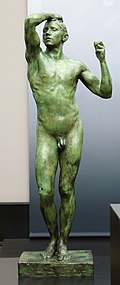
Shortly after creating this piece, Rodin presented The Age of Bronze (1877), the sculpture that brought him international fame.
Its realism was so striking that critics accused him of casting directly from a live model.
Cariatide and Atlantes belongs to the period just before that breakthrough, making it a key work in understanding Rodin’s artistic evolution.
Only two other copies are known to exist, as it was produced during his early career as a decorative sculptor.
When you visit the Niigata Prefectural Museum of Modern Art, take a moment at the entrance to admire this masterpiece.
With its blend of power and elegance, Cariatide and Atlantes captures the moment when Rodin began to shape the future of modern sculpture.
Closing Thoughts
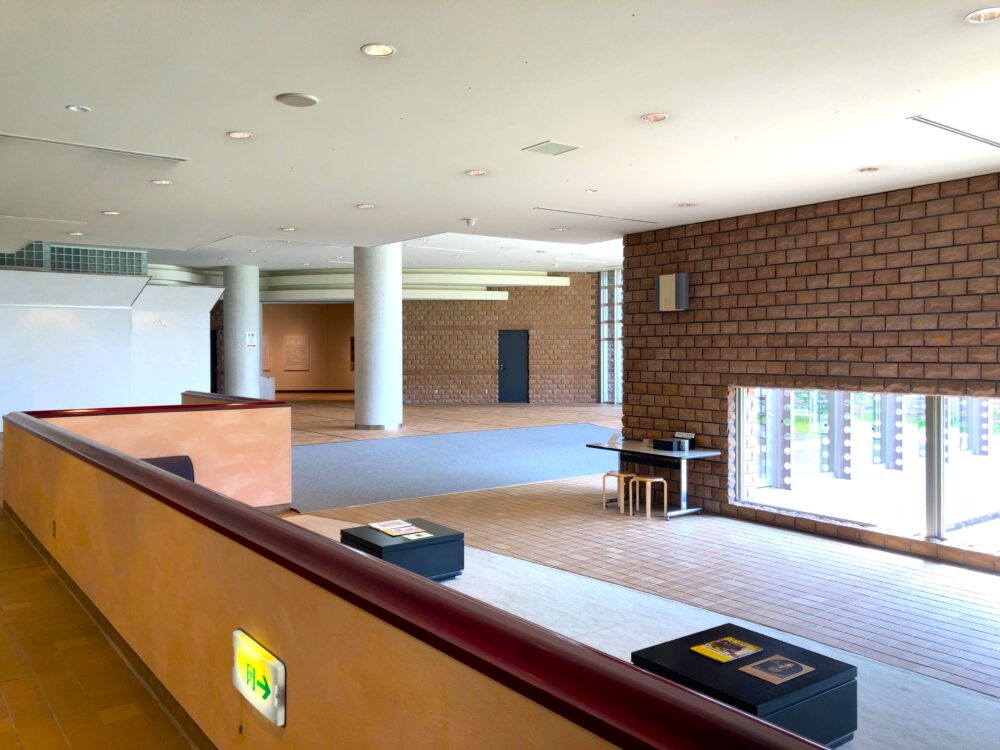
This time, we introduced the Niigata Prefectural Museum of Modern Art, located in Nagaoka City—one of Japan’s leading rice-producing regions.
How did you like it?
Here, you can experience the flow of Western art from the late 19th to early 20th century,
from the powerful sculptures of Auguste Rodin to the delicate colors of Maurice Denis and Jean Lanson of the Nabis group.
It’s a place where art breathes in spacious, peaceful surroundings.
The museum sits inside Senshūgahara Furusato no Mori Park, known for its calm and relaxing atmosphere.
Nearby flows the Shinano River, Japan’s longest river, welcoming visitors with beautiful scenery that changes with each season.
After enjoying the exhibitions, take a short walk around the area.
You’ll find yourself soothed by both art and nature—a refreshing experience for any traveler.
Why not plan a visit on your next holiday?

Niigata Prefectural Museum of Modern Art — Visitor Information
Location: 3-278-14 Senshū, Nagaoka City, Niigata Prefecture





Comments